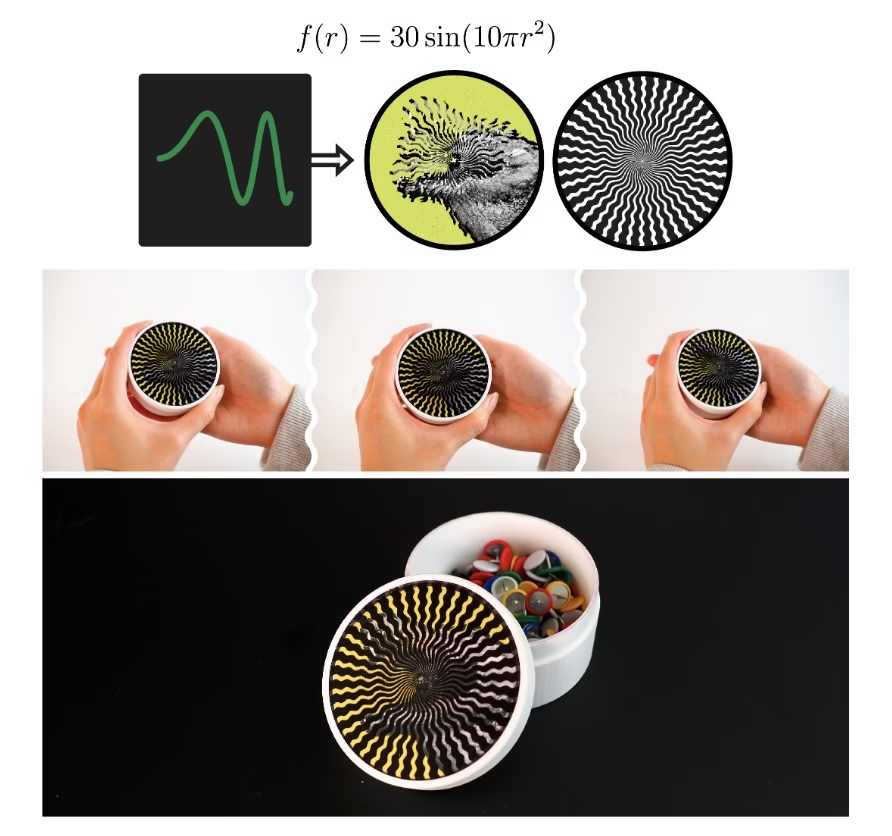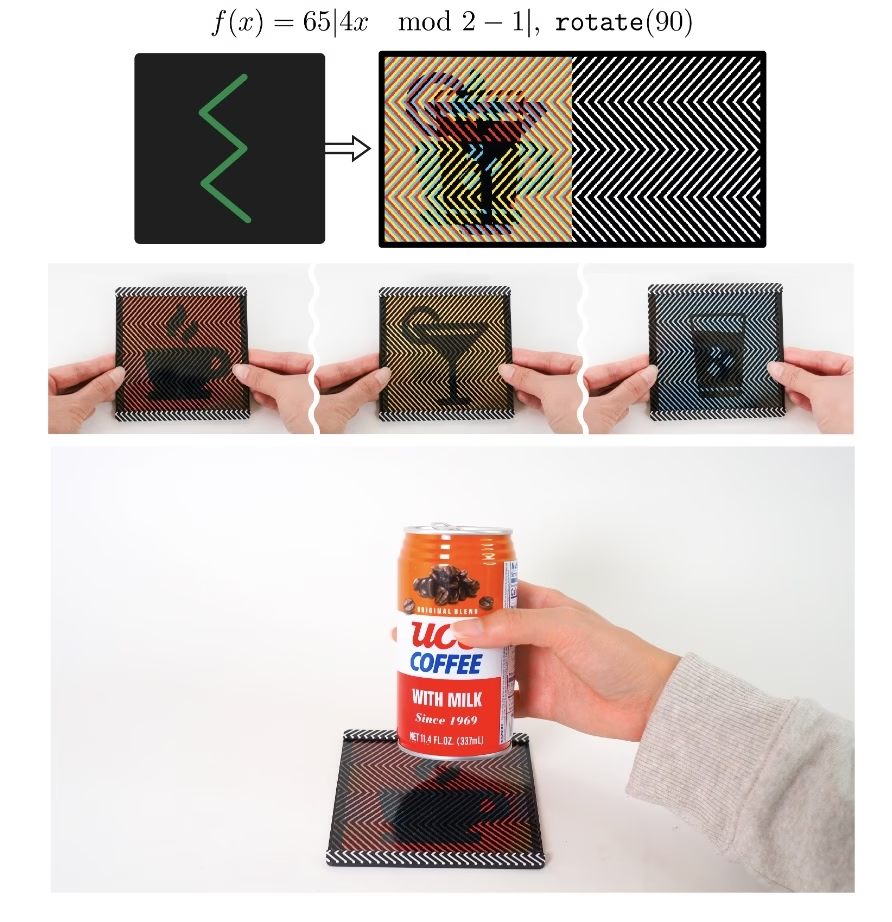When we think of animations, we usually imagine screens, lights, or electronics. But researchers at MIT have come up with a way to create animations just by printing images on paper or plastic. Their new tool, called FabObscura, lets you design and print pictures that appear to move when you slide a special patterned sheet over them — no electricity needed!

The Old Trick Behind the New Tool
This technique is based on something called barrier-grid animation, also known as scanimation.
- You may have seen it in children’s books or novelty cards: when you move a striped transparent sheet across an image, the picture seems to come alive.
- The stripes hide and reveal parts of the image frame by frame, creating the illusion of motion.
It’s been around for over a century, but designing these animations by hand is slow and difficult.
What FabObscura Does?
FabObscura makes the process much easier by using computer design and 3D printing. Here’s how it works:
- Upload a simple animation (a few frames, like a flower blooming or a character waving).
- Choose or generate a barrier pattern using math functions (zigzags, waves, spirals, etc.).
- Preview the effect on screen to see how it will look.
- Export files for printing — one for the picture, one for the overlay.
- Print and assemble. Place the overlay sheet over the picture, and as you slide it, the image looks animated.
The researchers demonstrated a range of prototype objects:
- A coaster that morphs between a coffee cup and a martini glass
- A jar lid that “blooms” into a sunflower when twisted open
- A clock where a tiny mouse runs with every tick of the second hand.
They even pushed the idea of nested animations — combining multiple animations in one object. For example, an object might change shape in one direction, and reveal a different transformation in another direction.
However, there are trade-offs. Too many frames or overly detailed imagery can blur the effect. The team advises sticking to simpler, high-contrast designs for best results.

Fun Examples from MIT
The team at MIT showed some creative demos:
- A coaster that changes from a coffee cup to a martini glass
- A jar lid that blossoms like a sunflower when you twist it
- A clock where a tiny mouse runs with every second
They even tried double animations (nested effects), where moving the overlay in one direction shows one animation, and moving it another way shows a different one.
Why This Matters for 3D Printing?
So far, FabObscura works best with flat prints on paper or plastic sheets. But the researchers believe this method can be combined with 3D printing to make objects with built-in animations.
Imagine:
- Toys that move without batteries
- Packaging that changes when you tilt it
- Decorative surfaces that reveal hidden messages
- Curved 3D printed objects with animated skins
All done through design and optics, not electronics.

The Road Ahead
The MIT team is now working on:
- Allowing longer animations (full videos instead of just a few frames)
- Improving clarity for complex designs
- Expanding the technique to work with curved and 3D surfaces
This project comes from the MIT CSAIL Human-Computer Interaction Engineering Group, led by Professor Stefanie Mueller, with PhD student Ticha Sethapakdi as the lead author. Their paper, FabObscura: Computational Design and Fabrication for Interactive Barrier-Grid Animations, was presented at UIST 2025.
In a Nut-shell
FabObscura is a design tool that lets you 3D print or paper-print moving pictures using optical illusions. It takes an old visual trick and gives it a modern, computer-aided twist, opening new creative doors for art, design, and even product packaging.

